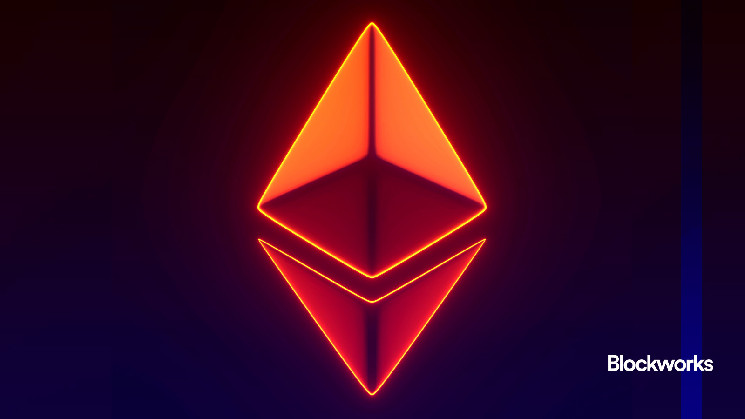Layer-2 sequencers have become dangerously centralized, introducing significant risks that undermine the fundamental principles of blockchain. To protect network integrity and prevent the erosion of trust, we urgently need to move to a model that is better able to eliminate single points of failure.
Failure to do so compromises network security and exposes entire ecosystems to serious threats, including transaction censorship, security breaches, and the potential compromise of customer data and funds.
As of Q2 2024, layer 2 solutions built on top of the Ethereum network are processing on average twelve times more transactions than the base layer. Similarly, on June 6, the total value (TVL) of the layer 2 ecosystem rose to a record high of $49 billion, signaling the increasing adoption of these ‘execution’ networks. However, as these solutions have gained traction, a pressing problem has emerged: the centralization of their sequencer operations.
Sequencers are essential network components responsible for ordering and batching transactions before they reach the Ethereum mainnet. However, they have become a double-edged sword, offering efficiency at the expense of decentralization.
Read more in our opinion section: The biggest threat to Web3’s security is a familiar monster: centralization
Sequencers manage the flow of data in Ethereum’s layer 2 solutions by determining the transaction order when multiple transactions occur simultaneously. When two users try to process a transaction at the same time, the sequencer decides who goes first.
However, many of these instruments carry the potential risks associated with being controlled by a single entity. While centralized components can enable faster transaction processing, they also come with significant disadvantages, such as the risk of censorship.
Such concerns are not unfounded. Today’s leading layer 2s all rely on “centralized” sequencers, which typically means that the company that built the rollup handles the sequencing operations entirely on its own.
For example, data shows that Coinbase’s Base network generated $30 million in revenue for the company in March alone based on sequencer fees alone – a figure that annualizes to approximately $360 million per year.
In a rapidly decentralizing landscape where the goal is to minimize trust, the idea of one company controlling a crucial part of a blockchain’s operation naturally raises eyebrows.
Christine Kim, vice president of research at Galaxy Digital, argues that decentralization should not be viewed as a binary state, but rather as a spectrum, with centralized influence kept to an absolute minimum. She has emphasized:
“A decentralized sequencer can be one of the most difficult initiatives for a rollup to work towards… to improve its decentralization and resilience […]”
As for minimizing centralized dependency, users of the Consensys-backed zkEVM rollup Linea recently suffered losses of $2.6 million. The most shocking part of the incident, however, was the unanimous decision by the project’s development team to pause the sequencer and “censor attacker addresses to protect users and builders.”
This incident highlights the critical importance of decentralization and the dangers of sequencer centralization. By removing individual points of failure, decentralized sequencers make networks more resilient to attacks and technical failures. Furthermore, they better reflect the core values of blockchain technology, especially in terms of transparency and efficiency.
In this regard, most layer 2 solutions are quick to recognize the benefits of dividing control. Using a network of validators and block producers, layer 2 solutions can randomly select and rotate sequencer nodes. These parties share responsibility for ordering transactions and submitting batches, improving the security and resilience of the network.
This method ensures a fair and safe sequencing process while maintaining high performance, significantly reducing the risk of censorship or manipulation. That in turn encourages community participation and aligns incentives between the network and its users, more closely adhering to the core principles of blockchain technology.
Recently, Vitalik Buterin proposed a classification system for rollup networks – ranging from Stage 0 to Stage 2 – expressing his belief that most leading rollups today rely on some form of ‘training wheels’.
Read more in our opinion section: Ethereum is ‘much more centralized than people realize’: Blocknative’s Matt Cutler
Going forward, Tier 2s must drop these interim measures or risk stagnation. While centralization undeniably offers lucrative benefits and operational convenience, it primarily serves the interests of the operator. While decentralization is challenging, it brings long-term benefits to both the projects and their communities.
This “self-reinforcing model” reduces security costs and starts a virtuous cycle. Greater community participation leads to greater engagement and improved security, attracting more dapps and innovators.
Additionally, the steady inflow of liquidity into DEX’s post-sequencer decentralization shows that users can accept mild latency increases if properly incentivized. In addition to improving security through mechanisms such as liquid staking, the decentralization of sequencers aligns with the distribution of value to industry participants and contributors.
Revenue sharing models such as sequencer mining improve user retention and create a direct correlation between community participation, network security and ecosystem growth. Now that technical primitives and functional examples are readily available, even Bitcoin layer 2s are preparing to offer mining rewards through decentralized sequencers.
In the future, it is simply not enough for the Ethereum Layer-2 ecosystem to rely on just one network to have decentralized sequencers. Making the transition across multiple networks is critical to ensuring the integrity of blockchain technology. Established layer 2 systems must act quickly to prevent obsolescence and ensure the safety of their users.

